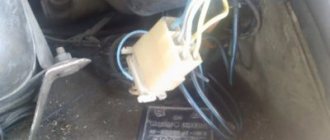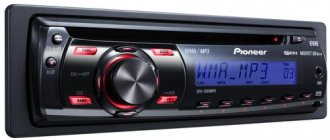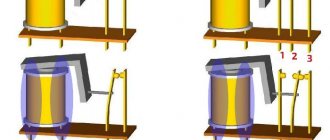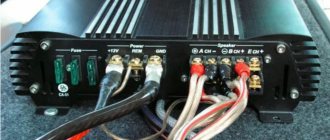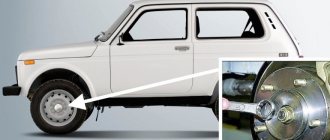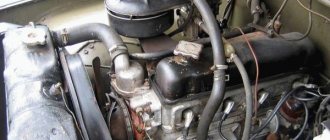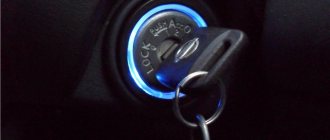Date of publication: June 26, 2021. Category: Automotive equipment.
The first cigarette lighters were born back in 1920 and since then have become one of the most indispensable elements in a car. Over the years of the formation and development of mechanical engineering, the operating principle of this miniature structure has not changed, but its purpose has expanded significantly. Today, with the help of this device, car enthusiasts recharge phones, tablets and laptops, connect car pumps, vacuum cleaners, fans, compressors and much more. And of course, the cigarette lighter is simply indispensable for smokers, both for those who still smoke cigarettes and for fans of electronic cigars that charge via USB.
Unfortunately, despite the appearance of all kinds of tees for the cigarette lighter, there is only one central element, and it has a number of advantages and disadvantages that should be taken into account when using this useful device.
General overview
A fuse is an electronic element necessary for the safe connection of wires and devices. As a result, no combustion occurs, which means that the technical equipment remains safe and sound. The structure is installed into a gap in the electrical circuit, so it first fails when a short circuit occurs, or in a situation where a large current is supplied.
A cigarette lighter is an equipment intended for the interior, which is a kind of power supply for additional electrical equipment (USB charging, auto compressor, electric lamp, additional lighting).
The fuse responsible for the cigarette lighter is considered to be an indispensable design for providing protection against burnout of expensive devices and equipment. As a result, the electrical circuit has high-quality protection against overload and increased current.
First, it is important to consider where the fuse for the cigarette lighter is located.
Which fuse is responsible for the cigarette lighter?
In practice, the cigarette lighter often stops working. More precisely, not the design itself, but a fuse that provides a high level of safety against sudden changes in voltage. Therefore, the question of which fuse for the cigarette lighter often becomes of considerable relevance. Failure can occur for many reasons. One of the popular ones is considered to be connecting an electric pump with a closed system. So, for example, a person purchased an electric pump from a nearby car service center and decided to test it by pumping the tires. After connecting the new device, the cigarette lighter was knocked out. Then another person decided to try the design on his car, and the situation repeated itself. After much investigation, it turned out that the whole issue was a closed pump.
As a rule, the fuse fails when the car owner begins to actively connect new devices to it (DVR, FM modulator, chargers and even radar detectors). Other common causes of fuse blowing include the use of poor-quality electronic equipment.
Similar devices such as tablets, smartphones, laptops also lead to device malfunctions because they have different voltage ratings. Depending on the car brand and manufacturer, the fuse may be shared with the radio, or specifically created for the cigarette lighter.
Fuse blown
A blown fuse is one of the typical causes of cigarette lighter malfunction.
Fuse box VAZ 2114
The fourteenth cigarette lighter fuse is marked as F7 (in some modifications of the car it may be designated as F9). To diagnose the problem, you will need to carefully inspect the safety block.
Before diagnosing fuses in the mounting block, it is necessary to remove the negative terminal from the car battery.
Useful : 4 reasons why the cigarette lighter on a VAZ 2114 may not work?
To check the functionality, you need to use a multimeter previously set to diode testing mode. When diagnosing a working fuse, zeros will be displayed on the device display, and the device will also emit a characteristic squeak.
Circuit breakers
Where is the cigarette lighter fuse located?
Most often, this element is located in a special section. Speaking from the structural side, this is a unit consisting of several PP lines and automotive systems. Visually, the design looks like an ordinary plastic box. There are several locations where the cigarette lighter fuse is located, taking into account the specifics of the car, manufacturer and specific model:
in the engine compartment (usually near the windshield);
in a car interior behind the trim, behind the panel on which the instruments are located;
behind the storage box;
in the luggage compartment (on some types of foreign cars).
As for domestically produced cars, they were often equipped with an oblong shaped block. But modern cars, powered by on-board PCs and other electrical devices, require a more spacious and modern fuse design.
In practice, in most cases the fuse is located in the contact and relay block, since this provides adequate protection from fusible elements. To find where the cigarette lighter fuse is located, it is first recommended to check the space under the hood or under the instrument panel.
In improved foreign cars, safety structures are located on the right. Additionally, it is worth reading the technical documentation, where you can find almost all the answers to your questions.
In most situations, the cigarette lighter fuse has a voltage of 20A and looks like a fuse, painted yellow. If there are several cigarette lighters installed in a car, the fuse is installed for each separately.
It is also recommended to pay attention to a few tips to find out where the cigarette lighter fuse is located:
use the instructions for the car. It is important to note that each vehicle is equipped with several sections. The first contains the fuse, the second contains the relay. It all depends on the specifics of the manufacturer. As a rule, one section is located in the cabin, and the other in the engine part. The element is located on the left side, where the steering wheel is.
A device with a cigarette lighter may not necessarily be located only in the block, but also with a relay. Since the relay provides protection for the wiring circuits, there is a possibility that the relay is responsible for the design of the cigarette lighter. If difficulties arise in finding a PP, it is advisable to contact the technical manual;
open the section. Some covers have clear diagrams on the reverse side showing the location of the parts. Each has a functional feature, so it is enough to study the drawing in detail to understand where the structure is located;
try to find information on the Internet. Through a search engine it is possible to find many forums with information where other car owners also share information.
It is recommended to pay attention to user tips that will help you quickly find a PP.
↑ VAZ-2107 cigarette lighter diagram
The cigarette lighter uses three wires to operate:
- "minus" mass;
- “plus”, carried out through the battery fuse;
- “plus” is in operation only when external lights are used, as it is connected to the instrument illumination lamp from the side lights.
Protection against various ignitions and overheating is also provided, so the battery is equipped with a fuse. The possibility of the cartridge jamming in the socket is excluded.
Typically, such fuses are made in the form of a low-fusible metal washer, which melts at an excessively high temperature and cuts off power to the battery, causing the cigarette lighter to become de-energized.
Also, some of these devices have a fuse built into the socket. Its difference lies in the simple replacement when the washer melts.
But recently, bimetallic fuses have been used quite often and are used many times. It is many times more profitable than other types because not only prevents the fuse from blowing, but after some time the contacts can open again.
Location of the cigarette lighter fuse depending on the make of the car
In order to have the most accurate idea of where the cigarette lighter is located in a car of a certain model, it is important to turn first to the instructions, which are constantly being improved by manufacturers, adding new information useful for car enthusiasts. Despite this aspect, fundamental differences from the standard PP layout are rarely encountered. To reduce your search time, it is advisable to consider several brands of models and find the location of the fuse.
VAZ 2108, 2109
On these vehicles, the safety section is located in the engine compartment, next to the windshield on the left.
It is customary to distinguish sections of outdated and updated types. Installation of the first option is carried out under numberings 7, 12. As for the second type, F4 or 10. Due to the difference in installation locations, some discomfort may arise, since you have to search for the PP through experiments.
VAZ 2110, 2111, 2112
The elements are concentrated in the section for installation in F18. It is important to note that, unlike the usual rating, it is 25A, which allows the use of additional equipment with the highest power. Installing the mounting block on the left side of the steering wheel or at the bottom of the instrument panel.
A distinctive feature is the presence of additional relay sections, which are placed with fuses, but in this case there is no need to touch the structure.
VAZ 2113, 2114, 2115
The main fuses in these car models are located in the mounting compartment, which are located close to the battery. However, there is an alternative option, when the unit is located in the cabin under the instrument panel. But such an arrangement can be found quite rarely.
Another distinctive feature is its knife-like appearance. The location diagram is on the inside of the cover in the PP, thanks to which it is easier to find the fuse. In practice, the element is most often placed in position F7.
LADA Priora
The installation unit is located in the car showroom on the left side under the instrument panel. The structure is protected from above by a lid. When dismantling it, direct access to the PP appears. In the first and second versions of Priora, the PP is located identically in position F13, which significantly facilitates and shortens the search time.
However, in comparison with the VAZ, the rating is only 15 A. The fuse, in turn, is designed to operate the cigarette lighter. There are no additional elements in the circuit, so we can talk about a slight load.
LADA Kalina
The relay with fuses and the mounting block in this model are located on the left side of the instrument panel, behind the controls and lighting. It is customary to allocate 2 structural blocks, which can accommodate 26 or 31 fuses. Regardless of the option, the location of the PP is the same on the F 20.
LADA Granta
The installation unit is located in the interior of the cabin on the left side on the instrument panel. On the back of the cover there is a circuit with fuses, where the one needed for the cigarette lighter is numbered F20. The rating is the same as that of Kalina - only 15 A. Therefore, it is not recommended to use devices with high power.
It is important to note that the PPs are responsible for the normal operation of the sound signal, as well as the lock on the trunk. If the fuse blows, it will disrupt the operation of the listed elements in the system.
Ford Focus
One of the most popular and sought after cars. Depending on the type of modification, the PP can be located in several places. So, for example, for the first generation this is the interior and the steering column on the left side. The second and third generations are characterized by the location of the block under the hood closer to the windshield on the right side. The standard rating is 20 A, and the PP is assigned number 109.
Renault Logan
The mounting section is located in the interior of the car showroom, on the side of the instrument panel. A distinctive feature of the location of the structure is the position F38, and on the second generation F 33. As for the denomination, its value is relatively low and is only 10A, and on the restyled model 15A. As a result, you have to be extremely careful when using additional equipment or devices.
Chevrolet Cruze
The vehicle mounting section is located under the hood. On the right side as close as possible to the niche. By analogy, you can use the diagram, which is located on the inside. The PP position is 6, and the element rating is the standard value of 20A.
Therefore, it is permissible to use additional equipment.
Opel Astra
On the right side there is an installation section under the hood, inside the cabin; sometimes it’s worth inspecting the trunk. There are three units in total in the car, but the necessary one is located in the cabin or in the trunk.
Depending on the car model, there is a rating of 15 or 20 A. However, this indicator is easy to look up in the car’s operating manual.
How to improve a ready-made cigarette lighter
Many car enthusiasts purchase a special splitter unit that allows you to connect several devices to one connector (see photo). However, the design of the car's cigarette lighter, as well as the cross-section of the wires, does not allow it to be used as efficiently as possible.
Connecting several devices leads to excess voltage or current, causing the fuse to blow or the wires to burn out. Then the device needs to be repaired. You can improve the device by choosing thicker cables that fit the car cigarette lighter.
The millimeter of cross-section is designed for a current of about 5 - 10 amperes. If a device with a power of 300–500 watts is connected to the socket, then the power will reach 25–40 amperes. You will need wires with a cross section of 4 - 6 mm. Such a reinforced structure will work for a long time without causing problems. You can connect an additional socket according to the instructions described earlier.
The cigarette lighter is an essential attribute of any car. Often there is a need for an additional cigarette lighter, located in the trunk or on the panel, next to the main one. Through a splitter you can connect up to 3 different devices to one cigarette lighter. The additional cigarette lighter is connected directly to the battery. After reading the article, you will learn how to connect the cigarette lighter in your car correctly without harming your car.
How does a cigarette lighter work?
A car cigarette lighter is two devices - a heating element and a connector (plug) in a convenient housing. It can be directly connected to the battery, so the device works even if the ignition switch is turned off. In addition to its main purpose, the plug is often used as a 12/24 volt outlet to which a splitter is connected to provide power to a laptop, phone or other devices. A splitter is also connected to it, so you can simultaneously charge a laptop, phone, or use a DVR. The power splitter or power supplies of these devices are inserted into a plug that provides a reliable connection to the cigarette lighter socket contacts.
What you need to insert a cigarette lighter
If you decide to install an additional cigarette lighter, you will need the following tools:
- drill;
- set of metal drills;
- metal crown, the diameter of which corresponds to the selected cigarette lighter;
- round and flat files;
- soldering iron;
- solder;
- rosin;
- pliers;
- side cutters;
- Screwdriver Set;
- heat-shrink tubing;
- switch;
- fuse;
- the wire;
- a regular cable splitter (220 volts) from a hardware store
How to make a replacement yourself
When the car enthusiast has decided on the location of the fuse, you can move on to the question of how to replace the cigarette lighter fuse yourself. It is worth noting that the procedure does not take much time and the task can be completed without outside help. Even if the car enthusiast does not have professional knowledge and experience in working with the internal structure of the car.
It is enough to follow the following instructions step by step:
First you need to turn off the ignition. Open the hood and remove the negative terminal from the battery;
Having the opportunity to work with the block, determine where the fuse is located. Unscrew the bolts and remove the cover to gain access to the internal elements of the system, which ensure uninterrupted operation of electrical equipment;
On the inside of the cover there is a diagram that will be needed to quickly and efficiently change the PCB. Before starting work, it is recommended to study the circuit as much as possible so as not to cause serious damage to important elements and to understand which design is responsible for the operation of the devices;
Then you can begin to dismantle the PP. Therefore, it is recommended to prepare special tweezers located in the body of the working unit in advance. As an alternative, it is acceptable to use pliers;
when it is necessary to change the PP, it is important to use only blocks that have the same rating. Accordingly, the parts must be marked “20”, which means a voltage rating of 20 Amperes. A fuse operating at this voltage is the most common. However, there are cases when a different indicator is indicated. It is important to comply with this condition in order to avoid malfunctions and difficulties;
First you need to decide whether the software works. If an element fails, this can be seen with the naked eye. The fusible thread will become charred black or broken. Sometimes the plastic casing begins to melt. If such signs are noticed, then in the near future we should expect that the element will stop working. As a rule, when the case begins to melt, this indicates the occurrence of sudden voltage surges or a short circuit. To identify the problem, you need to call the wiring. Typically, the problem most often diagnosed is a broken wire;
install a new part in place of the blown fuse. It doesn’t matter which side is installed, the main thing is to put it in an identical socket;
close the cover of the mounting section, connect the battery. Turn on the ignition and test how well the new element works after installation. If all manipulations are performed correctly, the cigarette lighter will work in the proper order. In the case where the fault was hidden not in the operation of the PP, but, for example, in the wiring, it is recommended to carry out a full diagnosis.
At this point, the task of changing the fuse can be considered completed.

